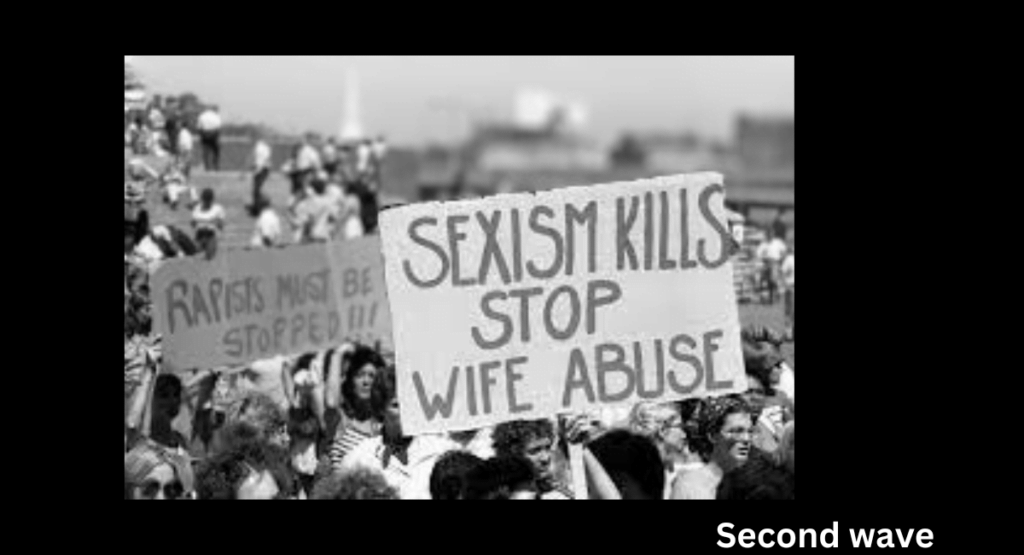Feminism Meaning
Feminism, a multidimensional and dynamic movement, has passed through several epochs, changing in reaction to social, political, and cultural circumstances. Its origins may be traced back millennia to ancient civilizations, but its present form arose in the nineteenth and twentieth centuries. This piece explores the complex history of feminism, focusing on important events and groups that have shaped the fight for equal rights for men and women.

Ancient Roots of Feminism
Feminist philosophy originated in ancient civilizations like Mesopotamia, Egypt, and Greece when pioneering women opposed patriarchal rules. Despite societal restraints, ancient Greek thinkers such as Sappho and Hypatia made great intellectual contributions. Similarly, in ancient Egypt, women such as Hatshepsut and Cleopatra gained governmental authority, breaking gender stereotypes.
What is the Suffrage Movement?
The Women’s Suffrage Movement in the late 1800s and early 1900s was a turning point in female history. The Seneca Falls Convention in 1848, headed by visionaries such as Elizabeth Cady Stanton and Susan B. Anthony, marked the beginning of the struggle for women’s voting rights. After decades of campaigning, the 19th Amendment to the United States Constitution was enacted in 1920, giving women the right to vote.

How First-Wave of Feminism came
The fight for women’s right to vote set the stage for the first wave of feminism, which fought for equal rights in the law and politics. Women like Margaret Sanger advocated for reproductive rights, and campaigners like Emmeline Pankhurst spearheaded the struggle for equality for women in the UK.
First-wave feminists addressed concerns such as labor rights, schooling, and marriage property rights, setting the groundwork for subsequent generations
Overview of Second-Wave Feminism:
Second-wave feminism emerged in the 1960s and 1970s, distinguishing itself by emphasizing larger social and cultural problems. Second-wave feminists, inspired by the human rights and anti-war protest movements, questioned gender conventions, battled for reproductive liberty, and sought equal pay and opportunity. Betty Friedan, Gloria Steinem, and Audre Lorde became emblems of the movement’s variety and power.

Intersectionality and Third-Wave Feminism:
As feminism evolved, criticisms arose about its lack of inclusion and awareness of crossing identities. The third wave of feminism, which arose in the 1990s, tried to overcome these flaws by embracing intersectionality and elevating the perspectives of neglected people. Activists such as Kimberlé Crenshaw have pointed out how race, class, sexual orientation, and other variables interact with gender to form oppressive experiences.
Global Feminism
While feminism is frequently associated with Western campaigns, its reach stretches well beyond national lines. Women in India, Iran, and South Africa established significant feminist movements, opposing patriarchal norms and campaigning for women’s rights. Worldwide, feminism is changing societies and breaking down oppressive systems, from the Arab Spring to the #MeToo movement

Challenges and Progress that affect feminism
Despite significant strides, feminism continues to face challenges in the 21st century. Persistent gender disparities in pay, representation, and access to resources underscore the ongoing need for feminist advocacy. Issues such as reproductive rights, gender-based violence, and LGBTQ+ rights remain hotly contested battlegrounds, demanding continued activism and solidarity.


2 Comments
watiba
February 24, 2024READ the article and give your feedbacks
#women
MOMINA BATOOL
February 24, 2024Good work !
It’s inspiring to see how these narratives continue to shape our understanding of empowerment and social justice. Looking forward to more thought-provoking discussions on this crucial topic.”